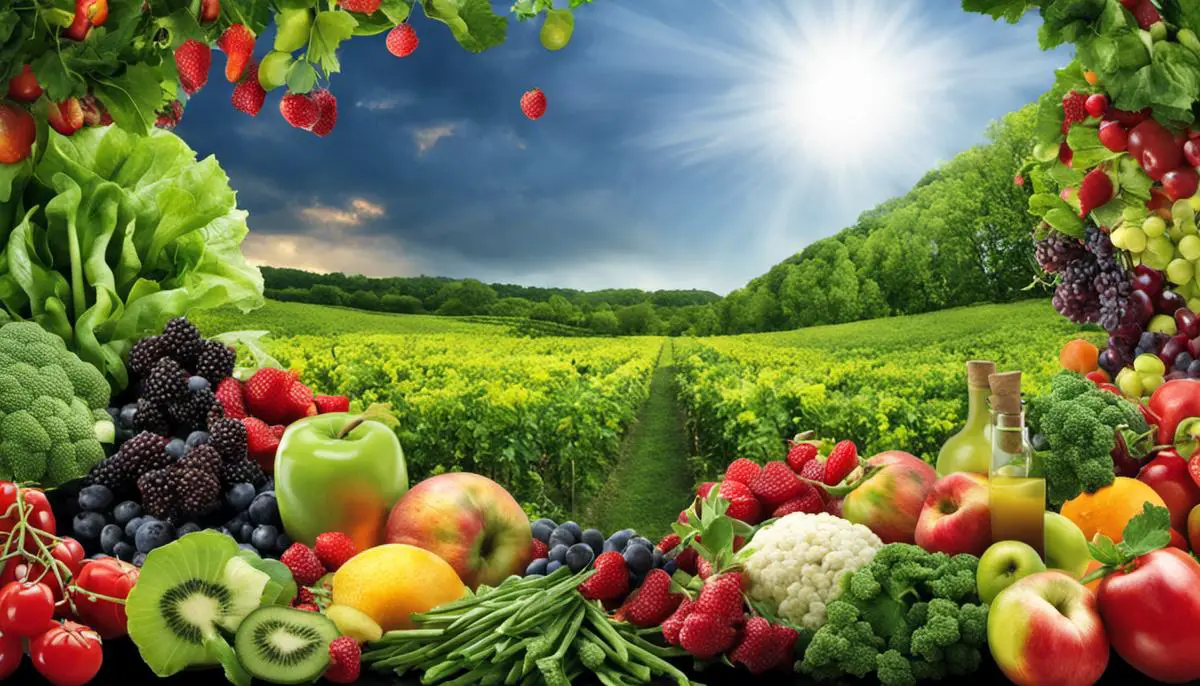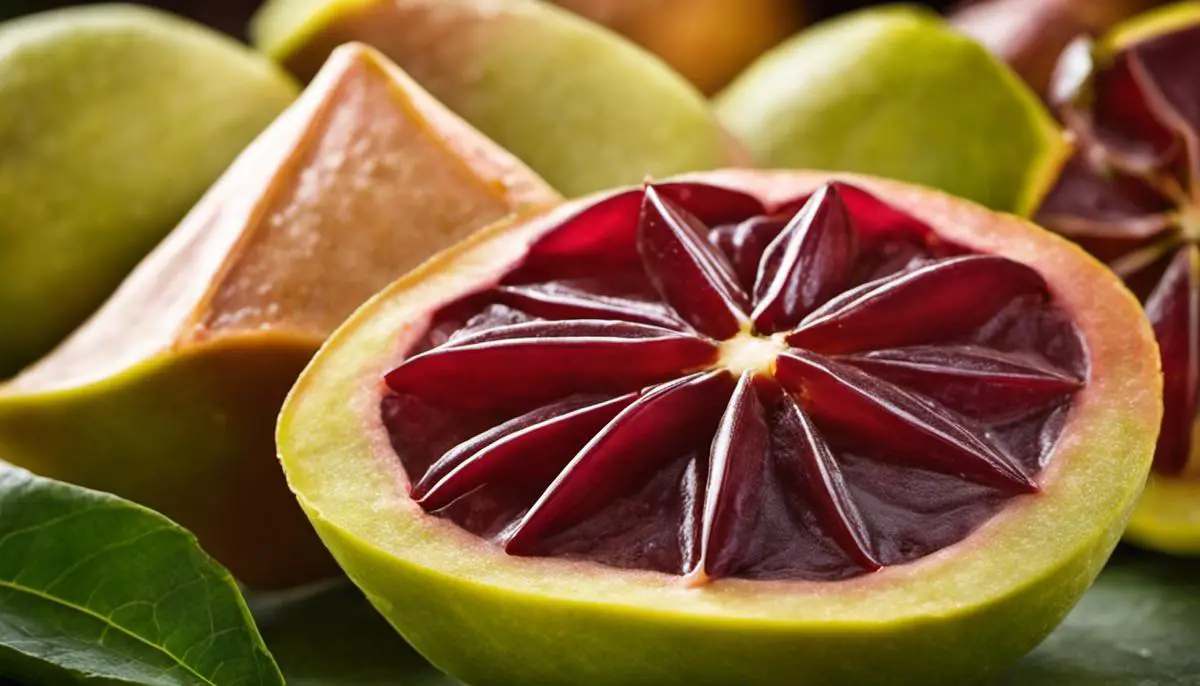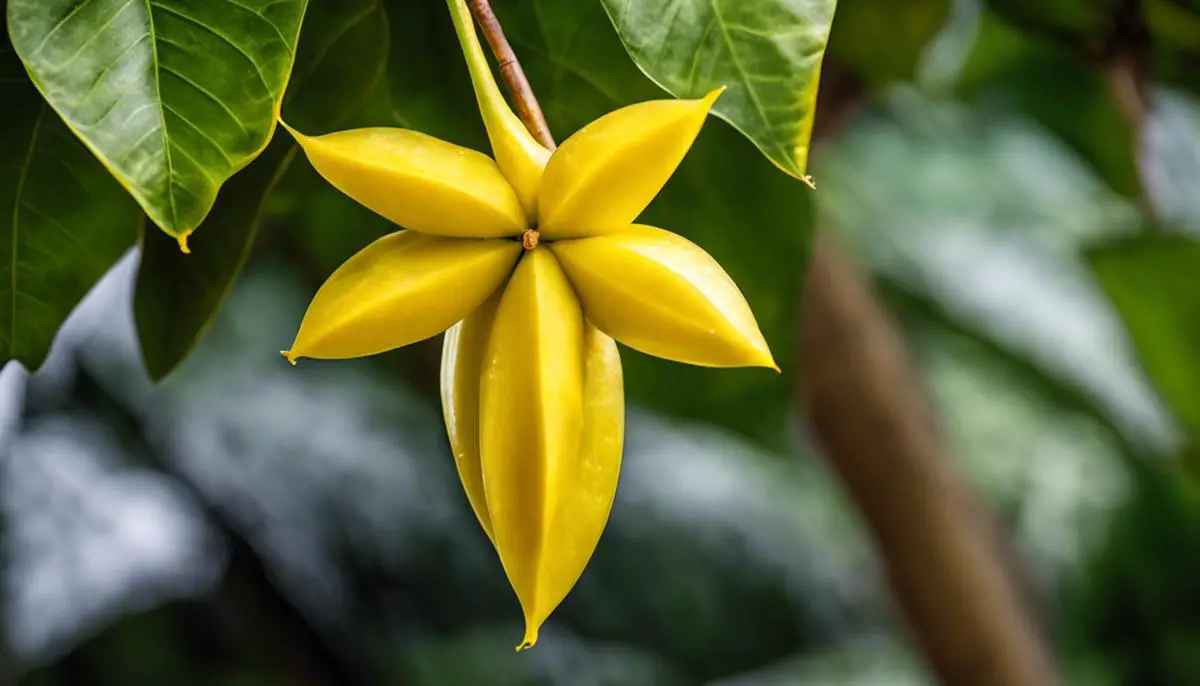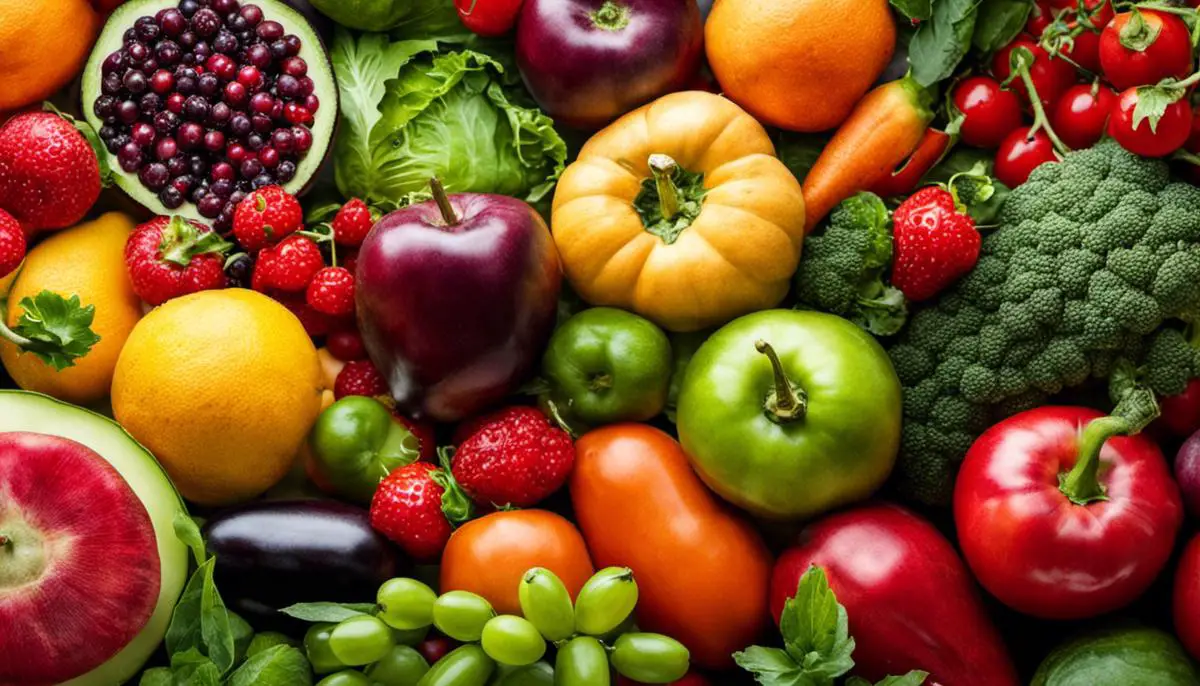In a world where good health has become a paramount priority, the significance of naturally occurring antioxidants cannot be overstated. Rising to fame due to its renowned antioxidant properties, the Carambola, more commonly known as star fruit, has been garnering attention for these very benefits. Our bodies are constantly exposed to harmful entities, popularly termed as free radicals, and antioxidants serve as our primary line of defense, fighting these invisible enemies, and supporting health and longevity. This utterance explores the workings of antioxidants, the introduction to the exotic carambola, the rich presence of antioxidants in it, the potential health benefits they offer, and tips to make carambola a part of your everyday meals.
Understanding Antioxidants: What They Are and Why They Matter
Understanding Antioxidants
Antioxidants are molecules that support human health by countering the damaging effects of free radicals, highly reactive compounds in our body that can cause cellular damage. This process, known as oxidation, is a natural part of our metabolic processes but can be accelerated by environmental factors like pollution, radiation, and cigarette smoke.
While oxidation is a standard part of routine body functions, an excess of free radicals can lead to oxidative stress, a state that damages cells and contributes to aging and disease development. Antioxidants work against this by neutralizing free radicals, hence playing a substantial role in preventing heart diseases, cancer, and multiple diseases related to aging.
Why Antioxidants Matter for Health
The importance of antioxidants for health is undisputed among researchers. Studies show that antioxidants play a crucial role in maintaining immune health, reducing inflammation, and preventing chronic diseases. The immune system heavily relies on antioxidants for its defense against pathogens. By neutralizing free radicals, antioxidants help prevent damage to DNA, proteins, and lipids, which can lead to cell death or dysfunction, and contribute to disease development and progression.
Moreover, there is mounting evidence of a strong correlation between antioxidant consumption and longevity. Foods enriched with antioxidants are known to delay the aging process, boost skin health, and reduce the risk of vision loss.
Carambola as a Rich Source of Antioxidants
Carambola, commonly known as star fruit, is a trove of antioxidants. It has been traditionally used in various cultures for its medicinal benefits for centuries, reflecting its high nutritional value. Recent research on carambola has thrown more light on its rich antioxidant properties.
Carambola is packed with phytochemicals that act as antioxidants, the most prevalent being polyphenols, flavonoids, and vitamin C. These compounds have been linked to a variety of health benefits, such as improved heart health, lowered risk of cancer, and slowed aging effects.
Consuming carambola can significantly contribute to a healthful diet. It’s filled with antioxidants, dietary fiber, and essential nutrients, all known for their potential to enhance human health. Its antioxidant content surpasses many conventional fruits, making it an exceptional choice for boosting antioxidant intake.
In conclusion, carambola’s rich content of powerful antioxidants, alongside its other nutrients, offers substantial health benefits and makes it a worthy addition to a health-conscious diet. Consequently, further research into its potential health benefits and uses in culinary applications is merited.
Uncovering Antioxidant Richness in Carambola
Scientific investigation has revealed a wealth of antioxidant potential in the carambola fruit. Notably, research presented in the Journal of Food Science and Technology discovered that the fruit’s potent antioxidant activity is due to its ample phenolic and flavonoid content. Complimenting these findings, another study from the Journal of Agricultural and Food Chemistry revealed the fruit’s powerful antioxidant and antimicrobial properties, partly thanks to its impressive vitamin C concentration.
The antioxidant richness of carambola opens promising possibilities for its use in preventing and managing diseases resulting from oxidative stress. Still, this is an emerging field and despite these encouraging early findings, further extensive clinical trials are needed to fully determine these health benefits and understand any potential risks linked with its consumption.

Carambola: An Overview of This Exotic Fruit
Tracing Carambola’s Tropical Roots
The tropical carambola fruit, often known as star fruit, has its origins rooted in the Southeast Asia region. This fruit thrives in tropical and subtropical climates, with ideal locations in countries such as Indonesia, Malaysia, the Philippines, Vietnam, and parts of East Asia. Global explorers and traders helped spread this fruit through tropical regions around the globe. Nowadays, it’s cultivated in diverse parts of the world, ranging from South America, Central America, and the Caribbean, to parts of the southern United States.
Description of Carambola
The star fruit stands out because of its unique shape. When sliced crosswise, the fruit exhibits a star-like pattern, thus its popular moniker – the star fruit. In terms of size, it typically ranges from 2 to 6 inches in length. The skin is typically a vibrant yellow, and the fruit inside is juicy and crisp. The taste can range from sour to sweet, dependant on the specific variety and maturity of the fruit.
Carambola’s Nutritional Profile
Along with its unique shape and flavor, carambola boasts a rich nutritional profile. It is a remarkably good source of dietary fiber and vitamin C, alongside other vitamins such as vitamin A, B2 (Riboflavin), and B9 (Folic acid). It also contains important minerals like potassium, phosphorus, and zinc. Indeed, one medium-sized star fruit fulfills nearly half the daily recommended intake of vitamin C.
Carambola as a Source of Antioxidants
In addition to its multitude of vitamins and minerals, Carambola is rich in potent antioxidants. The fruit is packed with polyphenolic compounds, flavonoids, and saponins that act as antioxidants. These compounds have been found to inhibit oxidative stress, combating free radicals within the body. Among the beneficial antioxidants found in star fruit are quercetin, epicatechin, and gallic acid. The high antioxidant content in carambola can help combat inflammation, slow aging processes, and may contribute to reducing the risk of many chronic diseases, including cancer and heart disease.
Carambola in Cuisine
Given its distinctive sweet-sour flavor, carambola is used extensively in various cuisines worldwide. It can be incorporated in salads, soups, or desserts, used in cooking as a garnish, or simply eaten raw. The fruit is also used to make relishes, preserves, and drinks.
Cautionary Note for Specific Consumers
While carambola fruit offers numerous health benefits, caution is advised for certain individuals. Specifically, those with kidney disorders or those taking prescription medications are advised to consult a healthcare professional prior to consuming carambola. The fruit’s content of oxalic acid and neurotoxins may interfere with certain drugs or cause harm to individuals with weakened kidney function.

Antioxidants in Carambola: A Deep Dive
Identifying the Antioxidant Rich Constituents of Carambola
Carambola, more commonly known as star fruit, is a tropical delight hailing from Southeast Asia. Notable for its rich concentration of antioxidants, the fruit contains an abundant supply of elements such as flavonoids, saponins, phytosterols, and ascorbic acid.
Flavonoids and saponins, plant-based substances found in carambola, are recognized for their potent antioxidant properties which protect the body against damaging free radicals. Beyond their antioxidant capacity, these compounds are noted for their anti-inflammatory, anti-viral, and anti-cancer properties. Carambola’s flavonoids, such as quercetin and epicatechin, are particularly celebrated for their health-enhancing benefits.
Phytosterols, another component part of the carambola cellular structure, have been associated with a decreased risk of heart disease. Lastly, ascorbic acid, better known as vitamin C, plays an integral role in tissue repair, immune system enhancement, and management of oxidative stress.
Quantity of Antioxidants in Carambola
Reportedly, carambola contains about 15-57 milligrams of vitamin C per 100 grams, making it a good source of this vital nutrient. Other antioxidants are present in varying quantities, with the exact amount varying depending on the specific variety of carambola and its ripeness.
Comparison to Other Fruits
When compared to some other common fruits, carambola shines for its richness in antioxidants. For instance, apples and bananas have lower concentrations of antioxidants per serving.
Blueberries and strawberries, on the other hand, are recognized for their high antioxidant content and are among the few fruits that surpass carambola in this aspect. Nevertheless, carambola presents an impressive antioxidant profile that can be an excellent addition to a balanced diet.
An Exploration into the Health Benefits of Carambola Antioxidants
The health-enhancing properties of carambola’s antioxidants have sparked interest among researchers. Preliminary studies and clinical trials indicate these antioxidants might play a significant role in disease prevention and the promotion of overall health.
Essential compounds like flavonoids, known for their anti-inflammatory properties, could have a pivotal role in managing chronic illnesses such as heart disease and diabetes. Furthermore, saponins have been associated with assisting in weight regulation and cholesterol balance. Plus, the antioxidative attributes of vitamin C are essential for immune system fortification and skin health.
However, it’s critical to note that due to its oxalic acid content, carambola should be consumed mindfully. This is particularly relevant for anyone with kidney concerns. Always consult a healthcare professional when introducing new food items into your regimen.

Health Benefits of Carambola Antioxidants
Unveiling Carambola: A Robust Source of Antioxidants
Indeed, carambola, also referred to as star fruit, is being hailed in scientific circles for its exceptional antioxidant profile. Loaded with vitamin C and an array of other vital nutrients, this unique fruit provides significant health advantages because of its antioxidant properties. The antioxidants combat detrimental free radicals within the body, potentially warding off diseases linked with oxidative stress, including cancer, heart disease, and early aging.
Carambola and Heart Health
Carambola’s antioxidant-rich content plays a crucial role in maintaining heart health. A study in the Food Chemistry journal indicates that polyphenols present in carambola fruit can reduce the risk of atherosclerosis, a disease where plaque builds up inside the arteries. Other components like sodium and potassium help manage blood pressure, and fiber contributes to lowering cholesterol levels. Such composition substantiates carambola’s beneficial role in heart health.
Skin Vitality and Carambola
Carambola’s antioxidant-rich properties also contribute significantly to skin health. According to research, the high levels of Vitamin C in the fruit can help slow down skin aging, reducing wrinkles and fine lines. This vitamin also promotes collagen production, a protein responsible for skin elasticity. Moreover, carambola’s antioxidants may safeguard the skin from damage by harmful ultraviolet rays, given their protective nature.
Strengthening Immunity with Carambola
Carambola, enriched with Vitamin C, is an immune system booster. This vitamin aids in the production of white blood cells, the body’s primary defense against infections. Vitamin C also functions as an antioxidant, protecting these white blood cells from damage caused by harmful free radicals. The immune system, being central to disease prevention and recovery, benefits considerably from regular intake of carambola.
Carambola and Disease Prevention
Carambola’s notable antioxidant properties have allied it with disease prevention. Research has associated the antioxidants in this fruit with a reduced risk of chronic illnesses, including diabetes, cancer, and heart disease. In addition to this, preliminary studies have suggested that star fruit’s neuroprotective attributes can be beneficial against neurodegenerative diseases like Alzheimer’s.
At the heart of the numerous health benefits of carambola lies its bountiful antioxidant content. Integrating this fruit into one’s regular meal plan could lead to a multitude of health benefits, contributing to everything from heart health to preventing illnesses. The ongoing research in this promising field never ceases to highlight carambola’s health and wellness-promoting potential. However, it’s important to bear in mind that the healthy impact of carambola is best exploited when it’s part of a balanced diet and a healthy lifestyle, and it’s not advisable for those with kidney issues due to its oxalic acid concentration.

Incorporating Carambola into Your Diet
The Antioxidant-Rich Carambola
Known universally as star fruit, carambola is gaining recognition as a powerhouse of antioxidants, compounds that have been recognized for their crucial role in neutralizing detrimental free radicals in our bodies and facilitating overall well-being. Rich in Vitamin C—one of the most effective antioxidants—carambola is capable of bolstering the immune system, refining skin health, and warding off diseases.
Incorporating Carambola into Your Diet
Making carambola a regular part of your diet can be an easy, delicious addition. Juice it for a refreshing antioxidant-rich drink or slice it into salads for a hint of tropical sweetness. You could also use it as a garnish or incorporate it into desserts for an exotic twist. One popular recipe is carambola jam, a tasty spread on toast or biscuits that also allows you to reap the star fruit’s antioxidant benefits.
Storage and Preservation of Carambola
Storing carambola properly ensures its freshness and nutrient retention. The fruit should be stored at room temperature until it ripens, after which it can be refrigerated to extend its shelf life. Remember to wash the fruit well before consumption or applying in any recipe.
Possible Carambola Substitutes
If you’re unable to find carambola, various substitutes can provide similar flavor profiles. Green grapes, with their sweet and slightly tart flavor, can mimic the taste of star fruit. Similarly, a combination of apples and pineapples can offer a close resemblance to its unique taste.
Precautions for Consuming Carambola
Despite its immense health benefits, carambola consumption should be moderated by individuals with kidney issues or those taking specific medications. This precaution is due to the fruit’s high oxalate content, which could contribute to kidney stone formation in susceptible individuals. Furthermore, it may also interact negatively with certain medications, particularly those for heart disease or cholesterol.
As with any dietary change or introduction of new food items, it’s recommended to consult with a healthcare professional to ensure it aligns with your individual health needs and medical conditions. Those currently managing health conditions, such as kidney disease or on prescribed medication, should seek professional advice before incorporating carambola into their diet.

By now, you should have a deeper appreciation for this star-shaped fruit. With its rich cache of antioxidants, carambola holds the potential to be a game-changer in your quest for a healthier lifestyle. It not only enriches your diet with essential nutrients but also introduces your palate to new, unique flavors. While its gastronomical versatility allows easy incorporation into your meals, caution should be exercised by those with pre-existing kidney conditions or those on certain medications due to its high oxalic acid content. In essence, carambola is an enticing combination of taste and health, a promising ingredient to spice up your daily nutrition and infuse your life with enhanced vitality.
